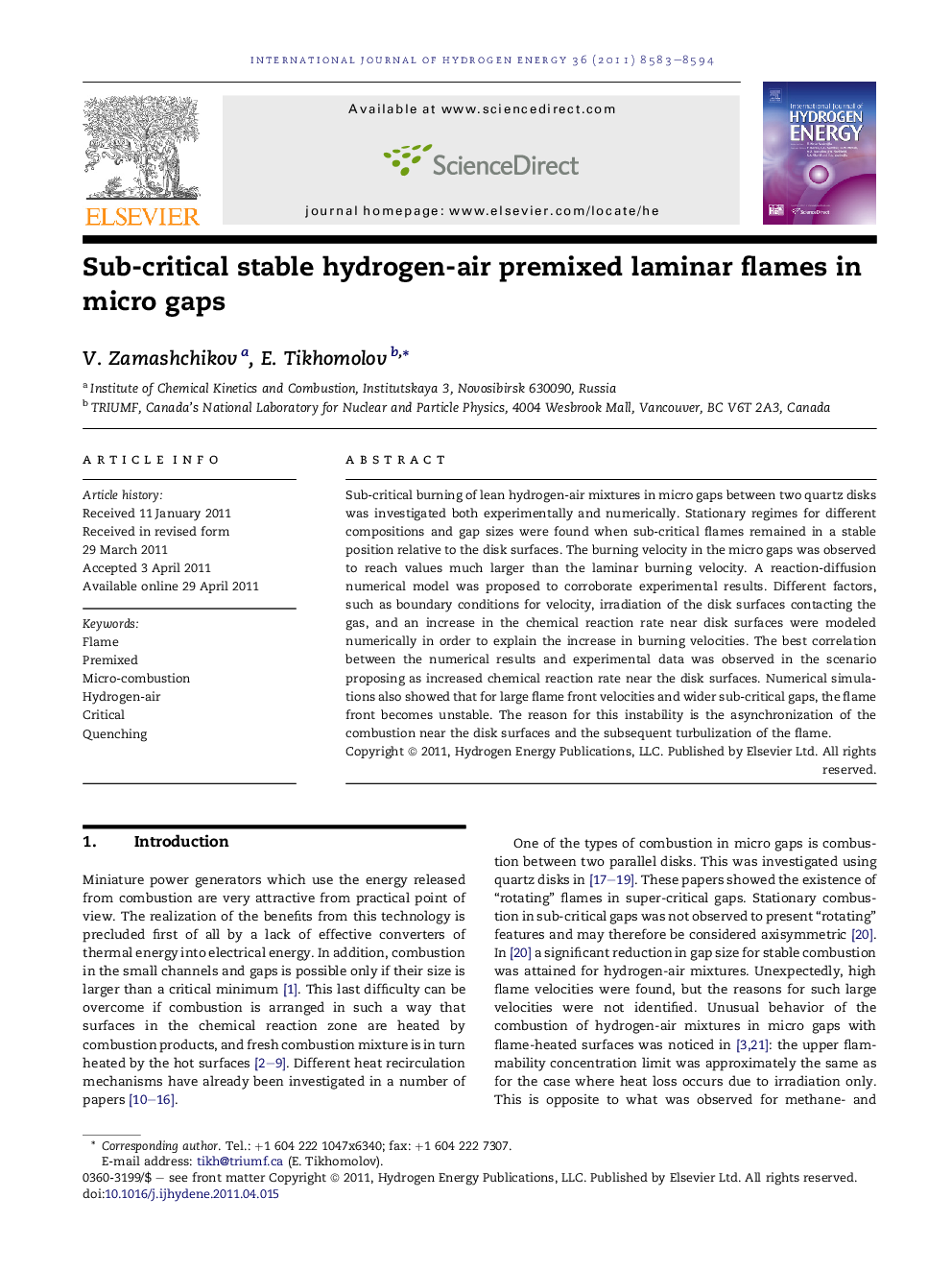| Article ID | Journal | Published Year | Pages | File Type |
|---|---|---|---|---|
| 1279176 | International Journal of Hydrogen Energy | 2011 | 12 Pages |
Sub-critical burning of lean hydrogen-air mixtures in micro gaps between two quartz disks was investigated both experimentally and numerically. Stationary regimes for different compositions and gap sizes were found when sub-critical flames remained in a stable position relative to the disk surfaces. The burning velocity in the micro gaps was observed to reach values much larger than the laminar burning velocity. A reaction-diffusion numerical model was proposed to corroborate experimental results. Different factors, such as boundary conditions for velocity, irradiation of the disk surfaces contacting the gas, and an increase in the chemical reaction rate near disk surfaces were modeled numerically in order to explain the increase in burning velocities. The best correlation between the numerical results and experimental data was observed in the scenario proposing as increased chemical reaction rate near the disk surfaces. Numerical simulations also showed that for large flame front velocities and wider sub-critical gaps, the flame front becomes unstable. The reason for this instability is the asynchronization of the combustion near the disk surfaces and the subsequent turbulization of the flame.
► Very high flame front velocities (FFV) in micro gaps were found experimentally. ► A reaction-diffusion model was developed for corroborating the observed results. ► Inclusion of heat recirculation mechanism and irradiation could not explain high FFV. ► High FFV are explained by an increase of chemical reaction rate near the surfaces. ► Simulations revealed front instability associated with asynchronization of burning.
